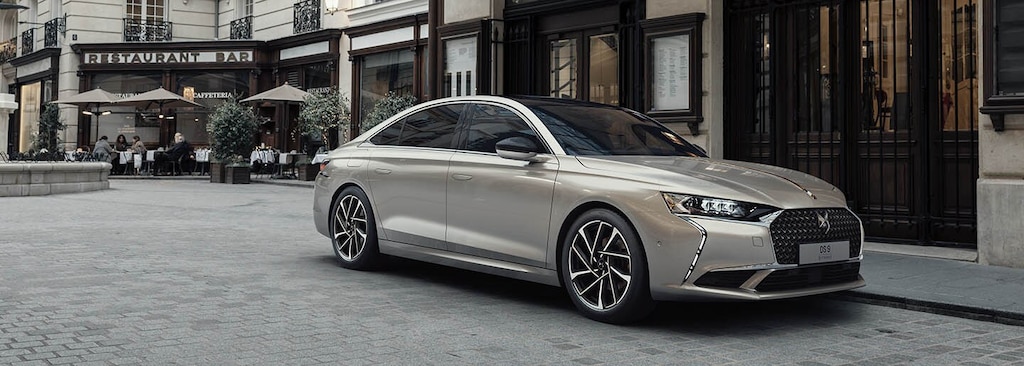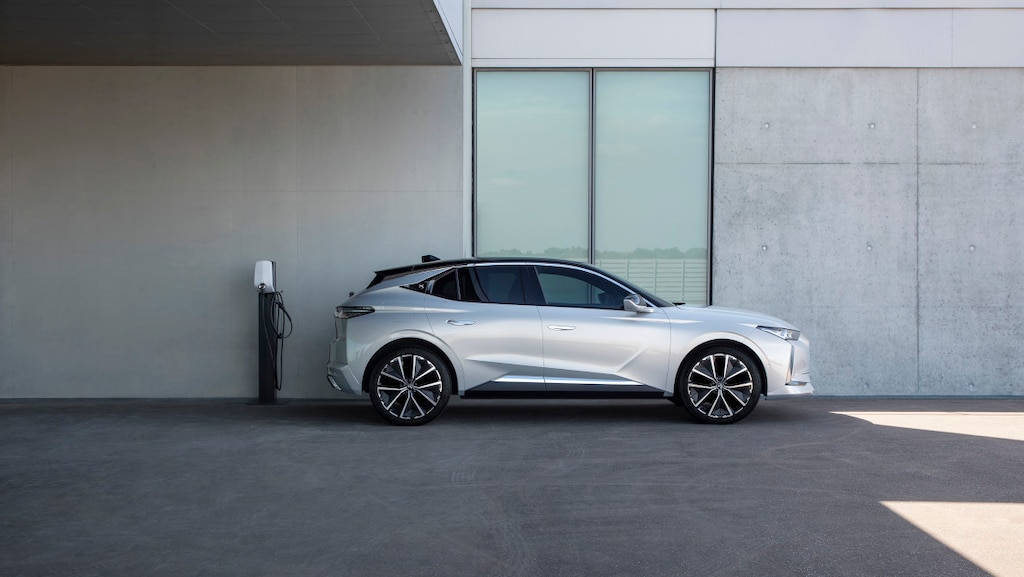
ELECTRIC RANGE
Range can be defined as how far you can travel in an electric vehicle from a single full charge.
Explore the impressive DS electric car range, offering both performance and efficiency for every journey
New DS 3 E-TENSE Range:
Up to 250 miles (WLTP*)
DS 4 E-TENSE 225 Range:
100% ELECTRIC RANGE: Up to 38.5 miles (WLTP*)
DS 9 E-TENSE 250 Range:
100% ELECTRIC RANGE: 41-46 miles (WLTP*)

Are range figures realistic?
Our range figures are from the WLTP test, which was specifically developed by the European Union to be more realistic than the old NEDC test, and give figures closer to real-life vehicle usage.
Therefore, the maximum range figure is realistic, however many different factors can influence whether that is achievable.
How do I know what range I can achieve?


What impacts range?
Many different factors impact range and any combination of these different factors will influence the range, which you achieve on any given day. Most of these factors would equally influence the mpg you would achieve in an internal combustion engine vehicle.
The predominant factors affecting range include driving style, driving speed, terrain (hills, etc), use of heating & air conditioning, acceleration, load (weight of luggage and passengers carried), temperature and use of regenerative braking.
Range can be maximised in a number of ways, by limiting the impact of the above factors – for example only using heating and air conditioning when needed or not carrying unnecessary load.
However, our vehicles also have a host of features designed to assist you in maximising range:


- Be guided by the indicators on the vehicle: while driving you can easily see whether your vehicle is using a lot of energy, or not – and small adjustments in speed can make a big difference.
- Changing the vehicle into ‘Eco’ mode means that it will prioritise economy over other factors, such as speed and subsequently is the best mode to use if you are looking to maximise range.
- ‘B’ for Braking Mode can also be selected on the gearstick, meaning your vehicle will use a higher level of regenerative braking and slow-up faster when your foot is off the accelerator. Regenerative braking slows the vehicle while harnessing the kinetic energy back into the battery, thus helping to maximise range.
- Within the MyDS app you can receive personalised eco driving tips, based on your individual driving data.
- Within the MyDS app the e-Remote control feature allows you to remotely pre-heat or cool your vehicle from your smartphone. For example, when waking on a hot summer day, you can switch on the pre-conditioning, so the car is an ambient temperature prior to your journey. As long as the vehicle is charging, the energy will be taken from the power source rather than the battery, therefore not affecting your driving range.
*The fuel consumption or electric range achieved, and CO2 produced, in real world conditions will depend upon a number of factors including, but not limited to: the accessories fitted (pre and post registration); the starting charge of the battery (PHEV only); variations in weather; driving styles and vehicle load. The plug-in hybrid range requires mains electricity for charging. The WLTP (Worldwide Harmonised Light Vehicles Test Procedure) is used to measure fuel consumption, electric range and CO2 figures. Figures shown are for comparison purposes and should only be compared to the fuel consumption, electric range and CO2 values of other cars tested to the same technical standard. The figures displayed for the plug-in hybrid range were obtained using a combination of battery power and fuel. Information correct at time of going to print. More details on WLTP can be found here.